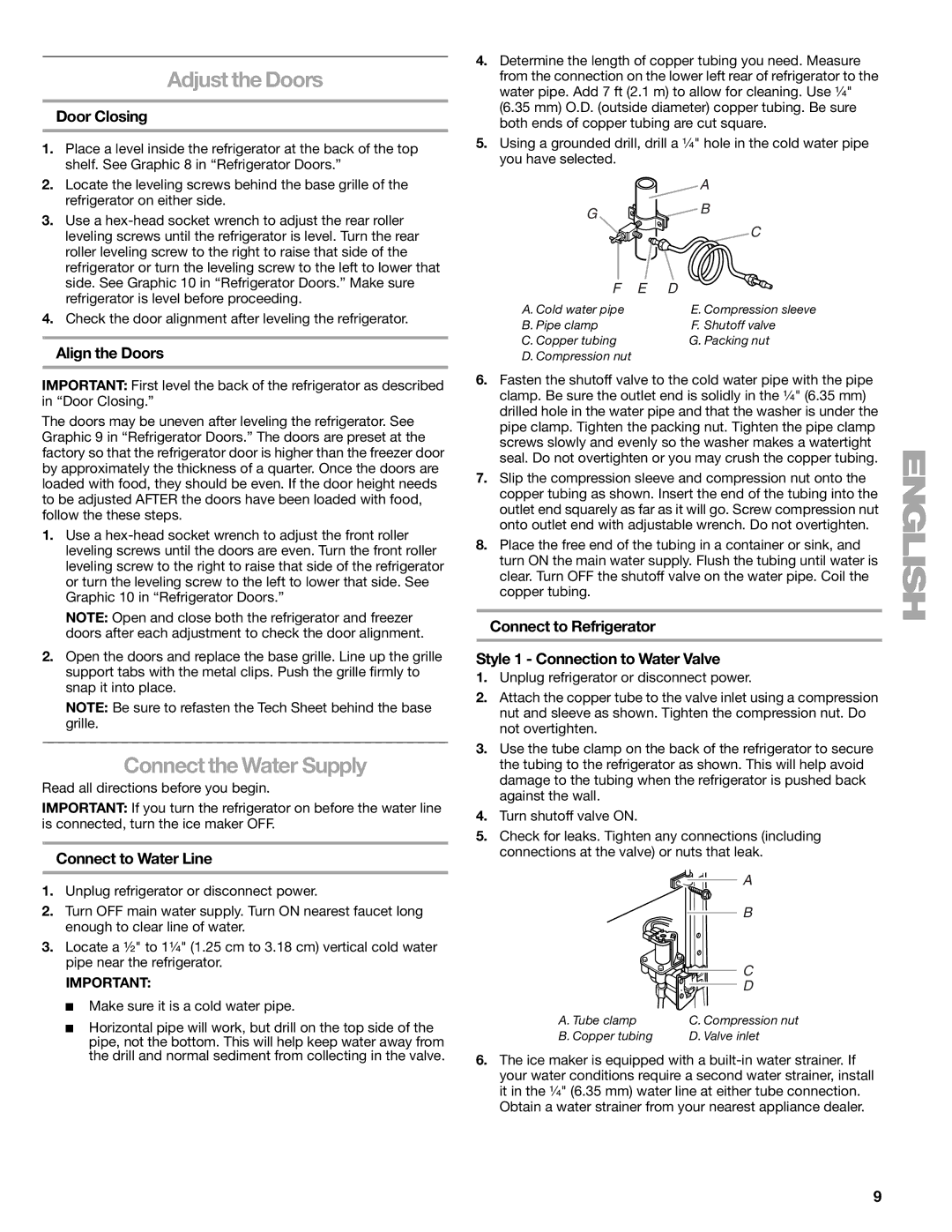T1KB2/T1RFKB2 specifications
Sears T1KB2/T1RFKB2 is a notable example of a home appliance line that has drawn attention from consumers for its reliable performance and innovative features. Designed for convenience and efficiency, these products represent a sophisticated blend of technology and usability that caters to the needs of modern households.One of the main features of the T1KB2/T1RFKB2 is their energy efficiency. With growing awareness around energy consumption, these models have been engineered to minimize power usage without sacrificing performance. This not only contributes to lower utility bills but also aligns with environmentally conscious practices.
The T1KB2/T1RFKB2 comes equipped with advanced cooling technologies. This includes variable temperature settings that allow users to customize the cooling experience based on individual preferences or seasonal requirements. The units are designed to maintain consistent temperatures, ensuring optimal conditions for food storage. This consistency is crucial for prolonging the freshness and safety of perishable items.
In terms of design, both models boast an aesthetic that blends well with various kitchen layouts. With sleek, understated finishes, they provide a contemporary look that appeals to consumers. The layout of shelves and compartments within the units is thoughtfully designed to maximize storage space, making organization simpler for users.
Furthermore, these appliances incorporate advanced filtration systems that help in purifying the air inside the unit, ensuring that odors do not compromise the quality of food storage. This feature is particularly beneficial for households that store diverse food items.
Another characteristic of the T1KB2/T1RFKB2 is the user-friendly interface. With intuitive controls and easy-to-read displays, users can effortlessly navigate the settings to adjust temperatures or access different modes. This accessibility makes it suitable for all age groups, ensuring that the entire family can utilize its features without hassle.
Durability is also a hallmark of the T1KB2/T1RFKB2, with high-quality materials used throughout their construction. This ensures that they can withstand the rigors of daily use while maintaining their functionality over time.
In summary, the Sears T1KB2/T1RFKB2 blends energy efficiency, advanced cooling technologies, and user-friendly design in a durable package. These qualities make it a standout choice for families looking for reliable and effective home appliances.

